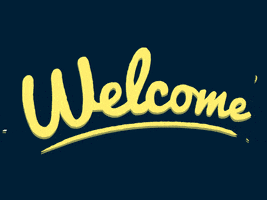Approaching the end of the course, this Celebration of Learning is an evaluation post of how I met every course learning goals and what resources I found valuable to support my learning process.

Course Learning Outcomes
- Examine the application of social media to support learning
Social media is developing rapidly and is showing influences on every part of our lives. It can bring numerous benefits to both learners and educators by creating a platform for information sharing and supporting individual learning needs in education and learning. Throughout the course, I had the opportunity to engage with different types of social media and reflect on its role in education. Shelley Moore, an educator and researcher, uses Youtube as a platform to publish short 5-minute videos about inclusive education (as shown below) and share relevant supportive resources under each video description. By utilizing this social media, she promotes discussions in the comment section under each video for viewers to share their thoughts and experience about the topic.
As part of the major project of the course, me and others members of our learning pod investigated Discord as a social media to support learning. By looking at different public educational servers, I developed a better understanding of how educators and learners utilize the central group-chat mode to discuss and explore different subjects. Through actively posting on the server channels and engaging with other learners in the Discord community, I realized that every member could take up both the role of an educator and learner based on their level of expertise in the subject. Although those with higher proficiency tend to take more of an ‘educator’ role and actively answer more questions in the community, everyone is welcomed to participate in the discussion and contribute their knowledge.
- Explain personalized learning and its relation to learning theory
Learning is a process that most of us have experienced at some point in our lives. However, how to learn effectively is a question that has been studied for decades and has led to the development of different learning theories. Through engaging with the course material, I not only learned about the educational learning theories, but became more aware of how digital technologies are reshaping how the development of the theories.
The Twitter post from Professor Ilana Horn generates my thinking about schooling institutions’ role in education. ‘Compliance’ follows more patterns of the Behaviorism to Cognitivism learning theory, where students observe and memorize from educators. ‘Curiosity’ encourages more Connectivism where students actively seek knowledge by engaging in networked communities and utilizing multiple information sources.
One of our learning pod members, Ruth, shared her experience with ‘experiential learning and learning from forming connections’ by participating in Co-op programs, group projects, and collaborations. Thinking back to my learning experience in the Health Information Science program, although traditional classroom teaching resembles the Cognitivism approach, the faculty was promoting connectivity by holding seminars and creating opportunities to engage with others in the industry. Co-op opportunities are a great way to learn with experience and make meaningful connections (i.e., professional networks).
- Recognize that the Internet is not a neutral or equal space for everyone
The development and access to digital technologies and the internet are not always equitable. Despite being controversial, I realized that Prensky’s idea of categorizing users by ‘Digital Natives’ and ‘Digital Immigrants’ reflects this inequality, where certain aspects of the digital world seem to fit with specific populations more than others. After engaging with colleagues’ posts, such as highlighted in Ruth’s discussion, I became more aware that age is not the prominent factor in navigating the use of technologies. Other influential social factors can influence accessibility as well.
Another resource that helped me better understand this learning outcome is the Code of Conduct developed in this course. It highlights the guidelines and responsibilities for members, contributors, and leaders to engage in the open education community. Establishing this code promotes learning and access without discrimination or bias in one’s social or cultural background. It encourages participation from all community members and strives to achieve an equal digital space. This shows me the importance of educators developing an open, inclusive and neutral online environment for learners thus allowing PLNs to be effectively formed.
- Apply social media to develop a personal learning network in support of your personal and/or professional development
After obtaining knowledge on how social media can support learning, the course also taught me how to utilize social media to develop PLNs and obtain valuable content for personal and/or professional development.
By creating the major project, I learned how Discord can potentially be a social media for developing PLNs by interacting with different educational servers. During the process, I experienced Discord’s ability to engage with various types of material, including images, voice calls, and multimedia files, which diversified the learning experience. Joining UVic’s Health Information Science server allows me to gain study tips, network techniques, and resources that will help me succeed in this program and be more prepared for my future career.
Furthermore, viewing the different social media platforms presented on the WordPress course hub is an excellent way for me to learn how the media that I use daily for leisure purposes can also be used for educational purposes and establish PLNs. For example, I previously viewed Instagram as a photo and video sharing platform, which may not be as suitable for education due to its limited content format (short videos and images only). However, by reviewing the Instagram project, I realized that educators could create a digital portfolio and form interest groups among students to facilitate information sharing and seek proactive learning.
- Identify privacy issues and practice online behaviours that are legal, safe, consensual, and ethical
With the rapid development and increased utilization of digital tools and technologies in various fields, privacy issues, and practicing ethical and legal online behaviors have become significant and increasingly important.
Privacy is a topic I discussed and researched in my Showcase Post during the course. I learned much about the different laws and regulations about information privacy for public and private organizations. It allowed me to look into the guidance and regulations around using digital tools in education, especially in primary or secondary school settings. Learning about this also generated my thinking about connecting with the healthcare industry. Health information privacy-related concerns and laws are essential when dealing with health technologies that manipulate massive patient information.
Another useful material that helped shape my understanding for this topic is the Screening Surveillance video series from Queen’s University. The video, Tresdancing, demonstrates the underlying consensual and ethical concerns in educational VR glasses. This implies the potential of online applications having ‘hidden’ functionalities from the public users apart from their intended purposes and pose threats to user privacy and information safety.
- Recognize data ownership and licensing (Creative Commons, Copyright, Fair Dealing, and Public Domain) as a core practice when creating, sharing, or using resources online
Data ownership and licensing issues have been a hot topic since the increase in digital content produced during the recent decade. Through interacting with colleagues’ posts and online resources, I learned that while obtaining and creating information can be intuitive, managing ownership and licensing issues may be more complicated.
The TurnItIn incident is an excellent example of concerns regarding student intellectual property and copyright issues. Although no charges have been made in legal courtrooms, this allows me to think critically about and put more effort towards the protection and distribution of resources created and shared online. As discussed in Sam’s Wow and Wonder post, I share similar thoughts that while there needs to be more governance and control with information handling, the need to balance licensing, ownership and privacy issues with achieving academic integrity cannot be overlooked.
Learning about this topic also facilitates my thinking about data ownership in healthcare. Digital health applications, such as electronic health records, can store massive amounts of sensitive patient information. It is essential for me to keep in mind that while patients may not have the most interactions with this information, their health data ownership needs to be respected when handling information.
- Practice digital, networked, and open literacies in support of learning about social media and personalized learning
With the increase in learning with social media and web platforms, practicing and acquiring digital and open literacies is important to utilize digital technologies to communicate and access information effectively. Through learning in this course, I realized that despite the fundamental abilities to navigate, use and access technologies, it is also crucial to develop understanding and critical thinking towards the information we encounter digitally. We should learn to distinguish true and false information and contribute our efforts toward not distributing any misleading information.
Reading one of Tim’s Wow and Wonder posts, the ‘ampliganda’ phenomenon on social media and large distribution of information rooting from the public can inherently create more effect than I thought. This Twitter Moment is a great resource that reveals the prevalence of misinformation and disinformation on social media, especially during times of crisis or major social news. It emphasizes the importance of knowing the ‘understand’ and ‘create’ aspects of digital literacy and considering authenticity, audience, and content quality when networking and learning online (as highlighted in the Digital Literacy Fundamentals by MediaSmarts). As a learner, this helps to guide my thinking towards developing higher transformative digital literacies when engaging with digital technologies.

Taking this course in my last semester of the four-year university degree program allows me to reflect on my past learning and guide my future learning as I transition from a student to a working professional. It helps me set the right path to learn with modern digital technologies and engage with learning networks or social media to advance my industry experience further as I move forward.
